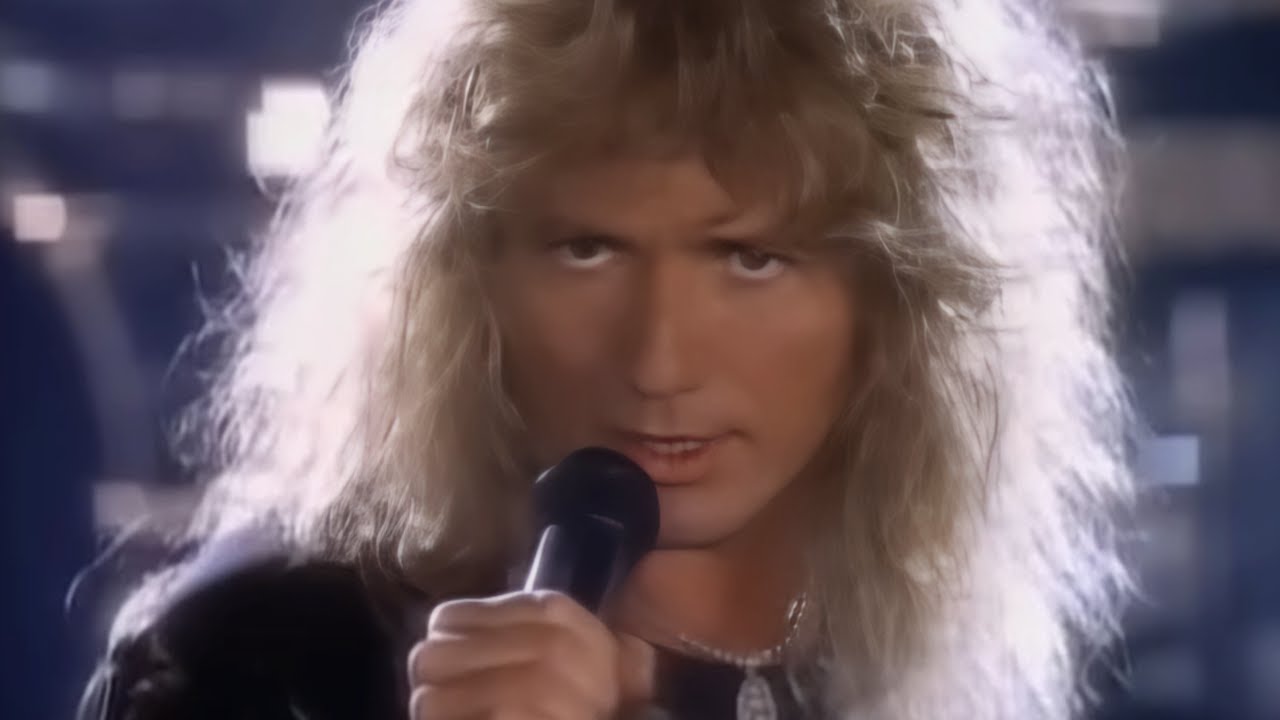Some songs do more than just become hits; they define eras and become anthems for generations. Whitesnake’s powerhouse track, “Here I Go Again”, is exactly that – a song with two lives, two eras, and a tale that stirs passion and nostalgia in the hearts of rock fans everywhere. Originally penned by David Coverdale and Bernie Marsden, this iconic number emerged in the early 1980s as a gritty blues-rock masterpiece, only to roar back in 1987 as a dazzling, stadium-filling power ballad that became a staple of the MTV age.
What makes “Here I Go Again” truly fascinating is not merely its chart success or the unforgettable music video; it’s about how a core message of resilience and self-reliance shaped through two distinct musical landscapes. The 1982 version echoes the raw blues roots, reflecting a band grounded in the hard-run 1970s tradition. In contrast, the 1987 rendition shines with glossy production and hits number one on charts across the US and Canada, embodying the swagger of glossy, arena-ready rock.
The original 1982 single, part of the album Saints & Sinners, was a blues-rock anthem that sold authenticity over spectacle. It reached a respectable #34 in the UK, supported by a simple video showcasing Whitesnake’s live performance grit without flashy effects. The track’s looser feel, subtle guitar riffs, and soulful keyboard flourishes gave it a breath of life and a sense of personal struggle that connected deeply with listeners.
Then came 1987’s remarkable reinvention. Re-recorded for Whitesnake’s self-titled album, the song exploded into an undeniable power ballad juggernaut. The tempo tightened, the production size increased, and every note was engineered for maximum impact on radio and TV. The drums thundered, guitars screamed with drama, and the keyboards floated like headlights piercing through a dark night. This version soared to number one on the Billboard Hot 100, a spectacular transformation that unlocked the song’s full potential.
A decisive factor in this meteoric rise was the iconic video, directed by Marty Callner and starring the charismatic actress Tawny Kitaen, whose presence cemented the song’s place in MTV and pop culture history. She became inseparable from the imagery of the track, a symbol of rockstar glamor and defiant independence that electrified viewers worldwide.
But what really cements “Here I Go Again” as a powerhouse is its masterful construction as a power ballad. The 1987 version expertly balances intimate verses with euphoric choruses designed for stadium sing-alongs, supported by soaring guitar solos and an unyielding vocal from Coverdale, whose husky yet resolute voice drives the song’s compelling narrative of courage and perseverance.
Lyrically, the song thrives on themes of renewal, bravery, and moving forward despite hardship—messages that resonate across decades and life events, from breakups to new beginnings. It’s a universal anthem for those marching on through adversity.
The single’s B-sides – “Bloody Luxury” in 1982 and “Guilty of Love” in 1987 – highlight Whitesnake’s evolution from gritty blues-rockers to polished rock giants, illustrating how the band adapted while retaining their core strengths.
Decades after hitting the peak of popularity, “Here I Go Again” hasn’t lost its steam. It remains a radio staple, karaoke favorite, and frequent soundtrack for films and shows, proving its timeless appeal. Its appearance in films like Ben Palmer’s “Man Up” showcases the song’s emotional power and broad cultural footprint.
Comparing the two versions side-by-side reveals a fascinating study in production evolution. The 1982 track is warm and loose, brimming with blues authenticity, while the 1987 hit is sharp and designed for impact, demonstrating how brilliant songwriting can transcend eras, styles, and technologies. The song’s evergreen melody and emotive chorus remain compelling regardless of the changing musical wardrobe.
Behind this cultural phenomenon stand key figures—the writers Coverdale and Marsden, director Marty Callner, the magnetic Tawny Kitaen, and the talented musicians who infused soul and precision into the 1987 version—each contributing to the song’s legendary status.
Ultimately, “Here I Go Again ’87” endures because it speaks to a fundamental human experience: the crossroads where independence is chosen despite risk and loneliness. It invites listeners to face their fears, stand tall, and march forward—again. For older generations and new fans alike, it’s a powerful, cinematic musical statement that still moves audiences in gyms, arenas, and quiet moments at home.
As David Coverdale puts it, “It’s about setting your jaw, taking your step, and going again.” This is not only a rock anthem; it is a timeless call to resilience and the relentless spirit of rock ‘n’ roll.
